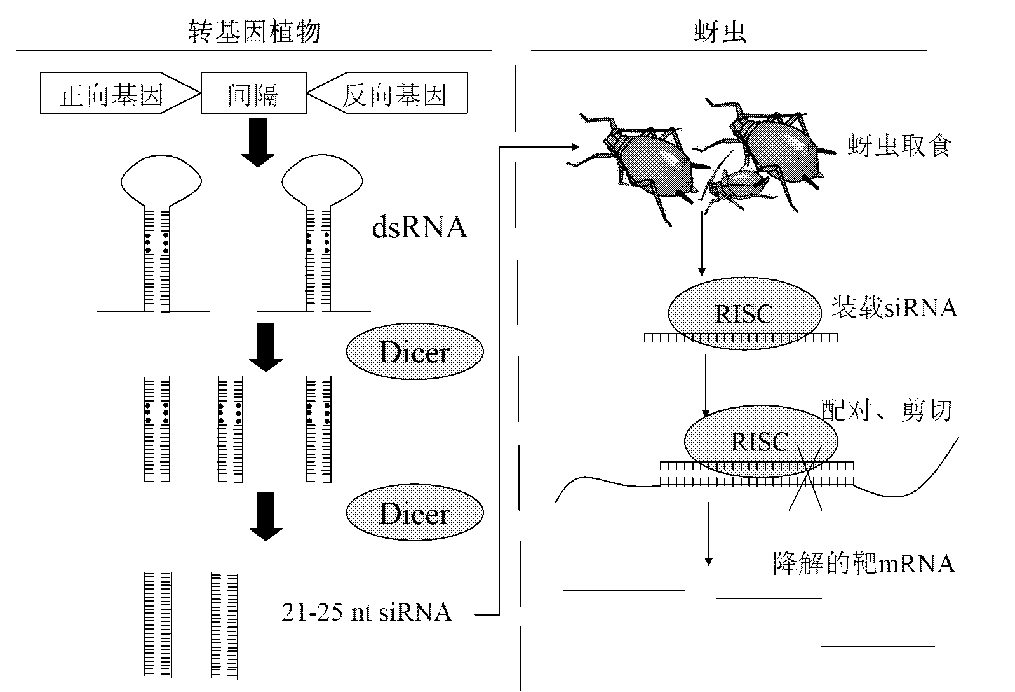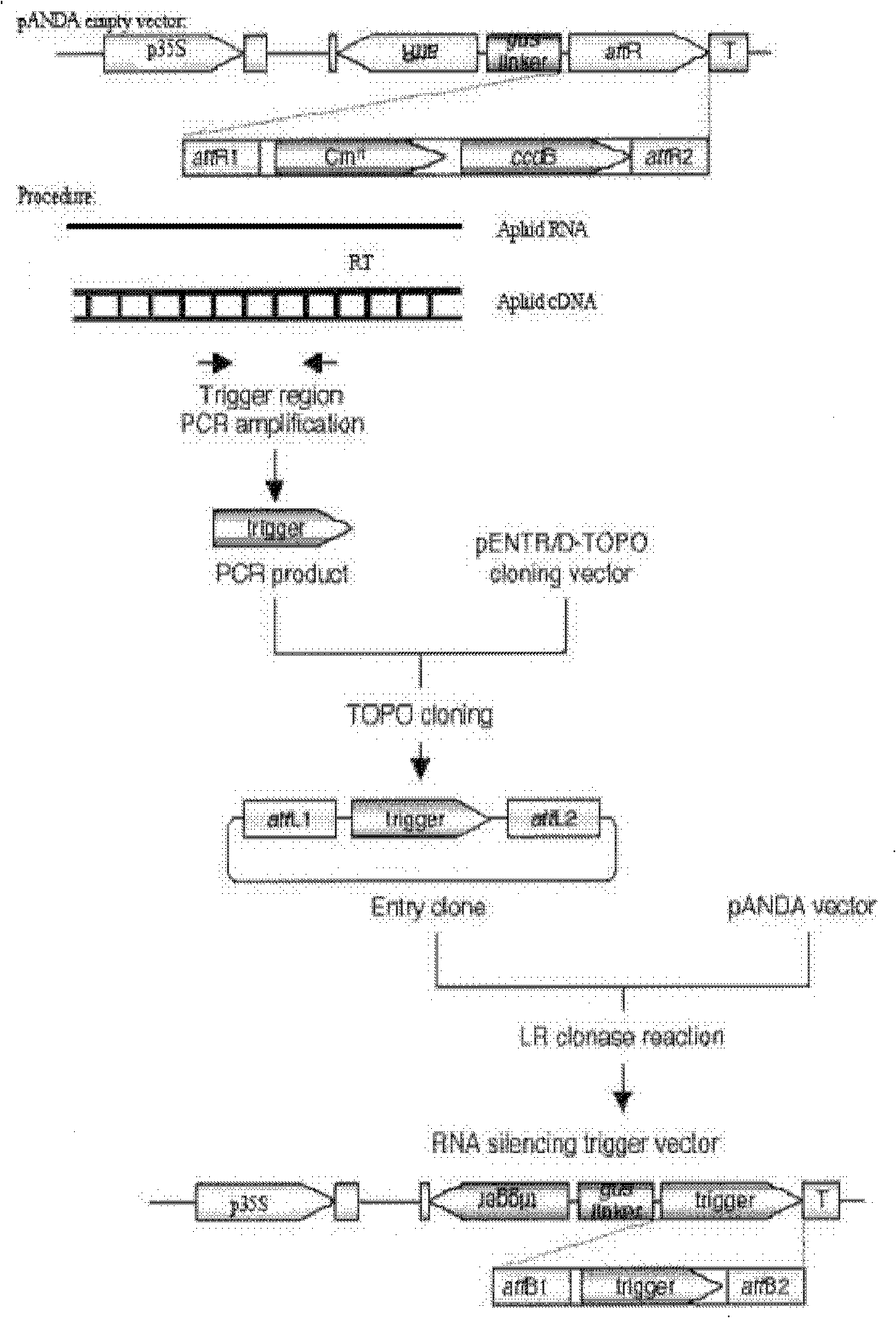Method for enhancing aphid resistance of plant
An anti-aphid, plant technology, applied in the fields of botanical equipment and methods, plant products, angiosperms/flowering plants, etc., can solve problems such as easy environmental pollution by pesticides, and achieve the effect of enhancing resistance
- Summary
- Abstract
- Description
- Claims
- Application Information
AI Technical Summary
Problems solved by technology
Method used
Image
Examples
Embodiment 1
[0037] Example 1 is used to construct dsDDB1, the isolation of dsCYP6 gene
[0038] Extract RNA from the second-instar aphids, and reverse it into single-stranded eDNA, use the cDNA single-stranded as a template, and use the following specific primers for PCR:
[0039] Primer pairs used to obtain DDB1 gene fragments:
[0040] DDB1F: CACCCCTGAAGACCAAGATCCCAAATT
[0041] DDB1R: ATCTCATCAAATCACCGCAAACA
[0042] Primer pairs for obtaining CYP6-1 gene fragments:
[0043] CYP6-1F: CACC AAGTACCCCATAGCTTATAGCATAA
[0044] CYP6-1R: CATTTGGTCTTTGAGATTTCTGTTC
[0045] After PCR amplification with KOD enzyme, the specific fragments are recovered.
Embodiment 2
[0046] Construction and transformation of embodiment 2 expression vector
[0047] 1. Construction of 35S::dsDDB1, 35S::dsCYP6 expression vector
[0048] The inventor cloned the specific fragment into the ENTR vector through the pENTR-D-TOPO cloning kit to form two ENTR intermediate vectors, pENTR-D / SD-TOPO-DDB1 and pENTR-D / SD-TOPO-CYP6-1, and then Through the LR reaction, the two gene fragments of DDB1 and CYP6-1 were respectively substituted for the ccdB lethal gene sequence on the pANDA vector to construct a construct as described in Formula 1. The spacer sequence is a GUS sequence. The constructed vectors are called 35S::dsDDB1 and 35S::dsCYP6-1 expression vectors respectively. Its construction process is attached figure 2 shown.
[0049] 2. Transformation of Agrobacterium tumefaciens
[0050] The transformation of Agrobacterium tumefaciens was performed by freeze-thaw method. A single colony of GV3101 (purchased from Invitrogen) was cultured overnight in 3 mL of LB ...
Embodiment 3
[0051] Example 3 Plant Transformation and Screening of Transgenic Progeny
[0052] In this example, the transgene of Arabidopsis is taken as an example.
[0053] Transformation of Arabidopsis plants was performed using the floral dip method. A single colony GV3101 containing a binary vector, 3 mL of LB medium (containing 25 μg / mL rifampicin, 50 μg / mL gentamicin and 50 μg / ml kanamycin), 28° C., 220 rpm, 24 hours. 3ml bacterial solution, 300ml LB medium (containing 25ug / ml rifampicin, 50ug / ml gentamycin and 50ug / ml kanamycin), 28°C, 220rpm, 16-20 hours. 5000rpm 10min. The bacteria were resuspended in 300ml of 5% sucrose solution containing 0.02% Silwet L-77. The flower bud part of the plant is soaked in the bacterial solution for 10 seconds, covered with plastic wrap, placed flat in a plastic basin, kept moist and protected from light, for 24 hours, then stood upright, and grown in the greenhouse until flowering and seeding. The T0 generation seeds were vernalized for 3 days...
PUM
 Login to View More
Login to View More Abstract
Description
Claims
Application Information
 Login to View More
Login to View More - R&D
- Intellectual Property
- Life Sciences
- Materials
- Tech Scout
- Unparalleled Data Quality
- Higher Quality Content
- 60% Fewer Hallucinations
Browse by: Latest US Patents, China's latest patents, Technical Efficacy Thesaurus, Application Domain, Technology Topic, Popular Technical Reports.
© 2025 PatSnap. All rights reserved.Legal|Privacy policy|Modern Slavery Act Transparency Statement|Sitemap|About US| Contact US: help@patsnap.com



